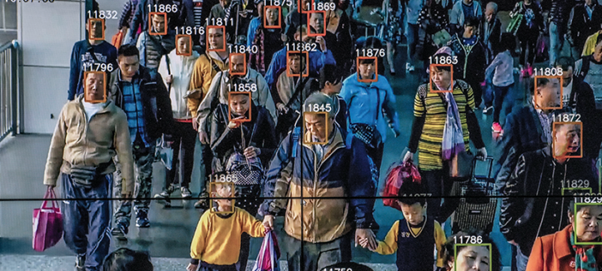China's mass surveillance
By Ambra Sargu
China has been moving into a new level of high-tech mass surveillance systems by working to combine its millions of security cameras with artificial intelligence and facial recognition technology to create a state secured and safe from any kind of dangers through mass surveillance systems. Facial recognition is just one of several branches of artificial intelligence technologies that have already started to redefine what is possible in China and elsewhere.
Many cities in China have already started using millions of security surveillance cameras and facial recognition technology to name and shame minor offenders, spot a criminal among the crowds of people and to verify the identities of passengers at airports. The country has ambitious plans to develop a vast national surveillance system based on facial recognition. It will be used to monitor its 1.4 billion citizens, in unprecedented ways. Chinese authorities have begun using a high-tech mass surveillance system combined with AI and facial recognition technology. For example, at a crossing in Shenzhen a large screen displays the faces of pedestrians who dared to jaywalk. Police are also using the technology to shame jaywalkers and to scan crowds for persons of interest. A massive, centralised database makes it possible for authorities and some private companies to identify nearly anyone by capturing their face.
Aside from that, China’s police have been testing and using sunglasses with built-in facial recognition to catch criminals, suspects and those travelling under false identities. The facial recognition sunglasses are being used to check people and registration plates against a centralised blacklist that the government complies. Using artificial intelligence, the glasses can scan details like car number plates or facial features matching them in real time. Wherever security checks are needed facial recognition systems are used there.
An immense network of security cameras and equipped with facial recognition is constantly monitoring the streets. Facial recognition systems are also used to match people with their ID cards. Authorities can use artificial intelligence that can alert them if someone in a video is walking too fast or someone is parked in a wrong place. Not only that, but they’ve also expanded their use of facial recognition to the next level. More of what China calls Black Tech is being rolled out. Drones to monitor border areas, dogs fitted with cameras that feedback into VR headsets. Systems to track and censor behaviour online and scanners that can forcibly read data from your smartphone.
Facial recognition algorithms are growing exponentially faster and more powerful thanks to a new technology called deep learning that allows computers to mimic the human brain’s ability to learn. That means they can now compensate for problems like low light and bad angles. They can also adjust for age making it possible to identify adults from their childhood pictures. However China is not the o my country that has implemented this technology. From CCTV cameras to biometric identification systems in airports, facial recognition technology is now common in a growing number of places around the world. For example, the majority of facial recognition technology in South America is aimed at cracking down on crime. In fact, it worked in Brazil to capture Interpol’s most wanted criminals. In Russia, authorities have relied on facial recognition technology to check for breaches of quarantine rules by potential COVID-19 carriers.
It is better for us to learn and know how it works to fully understand the benefits, limitations and dangers it can cause once abused. Using complex algorithms, facial recognition systems tart out by identifying all the faces in a given image. The more data they have, the better these systems are. What can you say about China’s facial recognition technology using mass surveillance?


